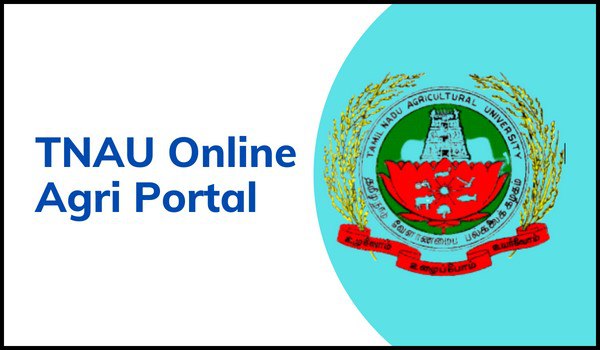This article contains the TNAU Online Agri Portal, Login, Admission, Form, Rank List, and many more details of this admission procedure. The Tamil Nadu Agricultural University, Coimbatore, will start the admission process to get entry into several UG Programmes. There are a total of 1600 Constituent colleges and 3100 Affiliated colleges, and the candidates have to appear in the examination for this admission; after the exam, the merit list will be released, in which the names of the candidates will get admission.
TNAU Online Agri Portal
The link for the TNAU Online Agri Portal is given at the bottom of this article, and the candidates have to click on that link to reach the homepage of this official website. After clicking on this link, the candidate has to choose from UG Admissions 2023, Diploma Admissions, GAT-B PG Admissions 2023-24, or Diploma Courses. After this, you can fill up the form and then complete the application form from this official website.
|
University Name |
Tamil Nadu Agricultural University, Coimbatore |
|
Type of University |
State Agriculture University |
|
Admission for |
UG, PG, Diploma Degrees |
|
Application mode |
Online |
|
Subject Available |
Agriculture, Horticulture, Forestry, Food Nutrition and Dietetics, Agribusiness Management, etc. |
|
Total Courses |
13 UG Programs, 40 PG Programs, & 27 Doctoral Programs |
|
Official Website |
tnau.ac.in |
TNAU Portal Login
On the TNAU Online Agri Portal, the candidates have to Login on the university’s official website. To login into this portal, you will need your username and password, after which you can fill up the form for this admission process to appear in the counseling process and then check the rank list released by the university, which contains the names of the candidates who are selected in this admission process.

The TNAU Online Agri Portal contains all the information of the candidate in this admission process. To obtain all this information, you have to log in on the official website; you can do further process of this admission process. This TNAU Online Agri Portal contains 14 UG Programmes, 33 PG, 28 Ph. D, 19 Constituent, 16 Directorates, 40 Research Stations, and 15 KVKs, so there are a wide number of opportunities.
TNAU Online Admission 2023
The candidates have to complete the admission process from the official website, and there they can fill up the admission form. The admission process will only be filled through online mode for the courses like agriculture, horticulture, forestry, food nutrition and dietetics, agribusiness management, and many more.
For these courses, the candidates have to start the admission process; there will be different dates for the admission process, so the candidates have to check these dates carefully. You can get all the details and can know the complete TNAU Online Agri Portal Admission Process from the official website.
TNAU Online Form
The TNAU Online Agri Application Form is available on the official website of the Tamil Nadu Agricultural University, Coimbatore. All the candidates who are interested and eligible for this admission process then, the candidates have to check the university’s website and start registering for this procedure. After registering, the candidates have to fill up the TNAU Online Form, which is available on the official website.
In this application form, the candidates have to fill in all the details regarding you and this admission. In this form, the candidates must also fill in all the details regarding the college and course they want to choose. This form will be available soon for all the courses on the official website, and its details are on this site, so you should check the website of Tamil Nadu Agricultural University regularly.
TNAU Rank List 2023
After the candidates appear in the TNAU Exam 2023, the university will release the TNAU Rank List, which will be available on the official website. So, the candidates who apply for this admission process have to regularly check the official website. The rank list will contain the name and roll number of all the candidates who successfully acquire the minimum qualifying marks in the TNAU Examination 2023.
After the release of this TNAU Rank List 2023, the candidates have to check their names in this list carefully, and if their name appears in this list, then they have to appear in the next process of this admission procedure. There are many courses and multiple programs in this admission process so the university will release multiple rank lists, which will be made available in different links on the official website.
TNAU Eligibility For Admission
Before applying for TNAU Admission to different programs, candidates must check their eligibility. Firstly, the candidates must clear their 10th to be eligible for diploma courses and their 12th pass to be eligible for UG courses. Also, the appearing candidates are also not eligible to be part of the TNAU Admission process.
After this, in the 12th class, the candidates should have science as the main subject; if the candidate is applying for the PG degree, they must have their UG Degree with them. After completing the admission process, the university will release the entrance test selection list, and if they get their name in this list, then admission to preferred colleges will be final.
|
Official Website of the Tamil Nadu Agricultural University, Coimbatore |
